Thunder
Replacing a 20 years old car sales and lead management application
Thunder enables dealers to assign and evaluate leads, create offers, place orders and record car handover to customers all in one web-base application.
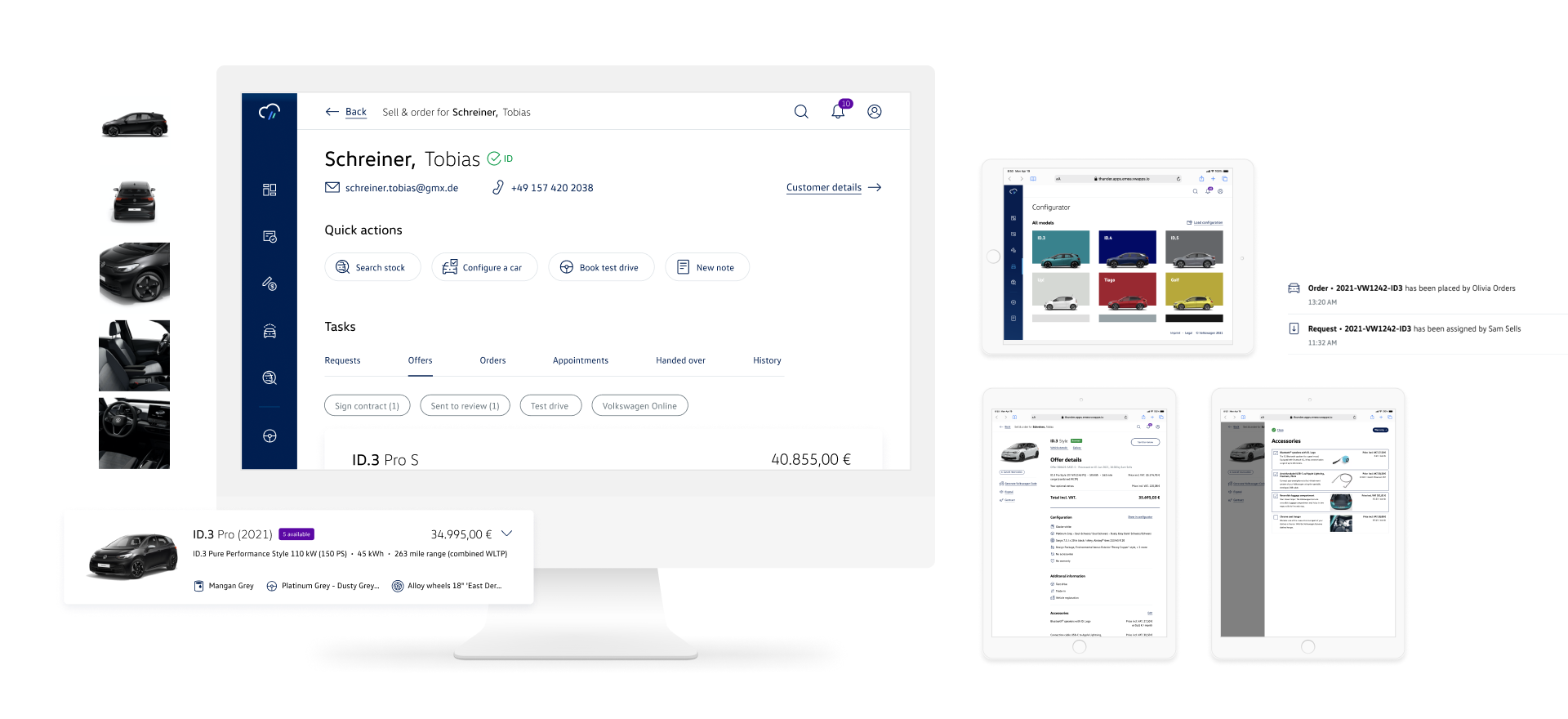
Context
For the past 20 years, dealerships selling Volkswagen Group cars have been stuck with an outdated car sales application reminiscent of Windows 95. This legacy system poses challenges with its lack of visual appeal, steep learning curve, and inefficiencies that hinder productivity.
Thunder is a web-based lead management and car sales application designed to reimagine the way Volkswagen Group dealerships operate.
Duration & Team
Jun 2021 – Now
6 Product mangers, 12 Developers, 4 Designers
Sep 2019 – Jan 2021
1 Product managers, 4 Developers, 2 Designers
My Role
Involved in multiple stages of this product, I was responsible for the whole design process – From research, prototyping and user testing to crafting icons and building screens to handover for development.
Discover
The design journey started by understanding the problem from the ground up. I dove deep into existing user interviews, mining them for insights and building a clear picture of how salespeople interacted with their existing systems and processes at dealerships.
Disccover
Empathy Mapping &
Team Knowledge
To get to the heart of user needs and challenges, we utilized an empathy mapping technique. This allowed us to visualize and understand user feelings, motivations, and frustrations. Simultaneously, I leveraged the collective knowledge of the team, tapping into their expertise and insights, and factoring these into the design strategy.
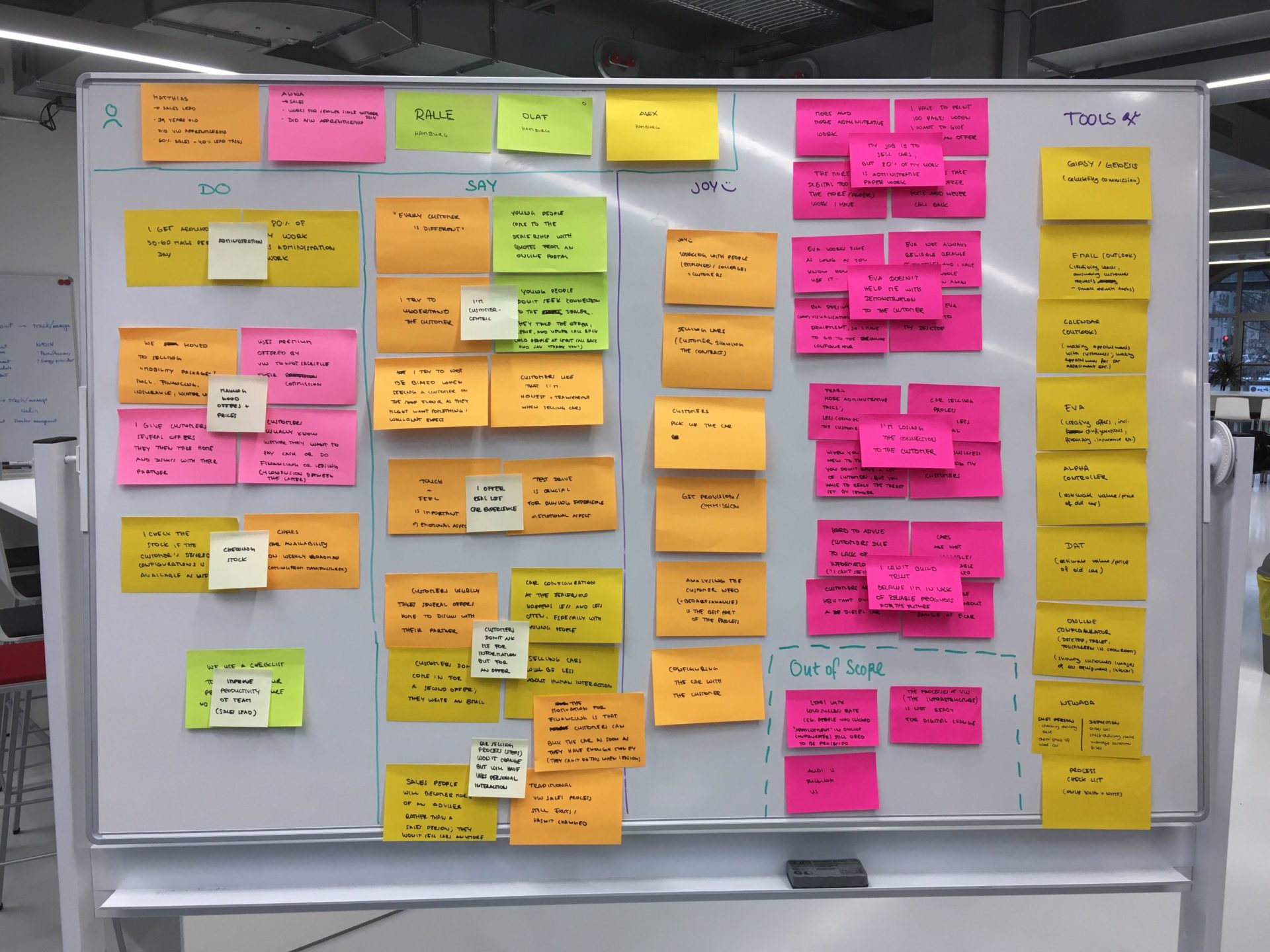
Persona
Sam Sells,
the car salesperson
🏁 Goals & Motivation
Be a good sales person = Sell mobility that matches the customer’s needs
Don’t give too much of own commission
Meet sales target and lead quote coming from Volkswagen
🙏🏻 Top Needs
Being a good decision making assistant
Smooth transition between all necessary tools
Transparent price calculation internally, understandable price presentation externally
Lead classification and easy follow-up
🥲 Top Pains
Too much administrative (paper)work
Lack of visualization and demonstration possibilities during sales talk Increasingly impersonal sales process
Hard to keep track of incentives (overview, expiration dates, link to offer)
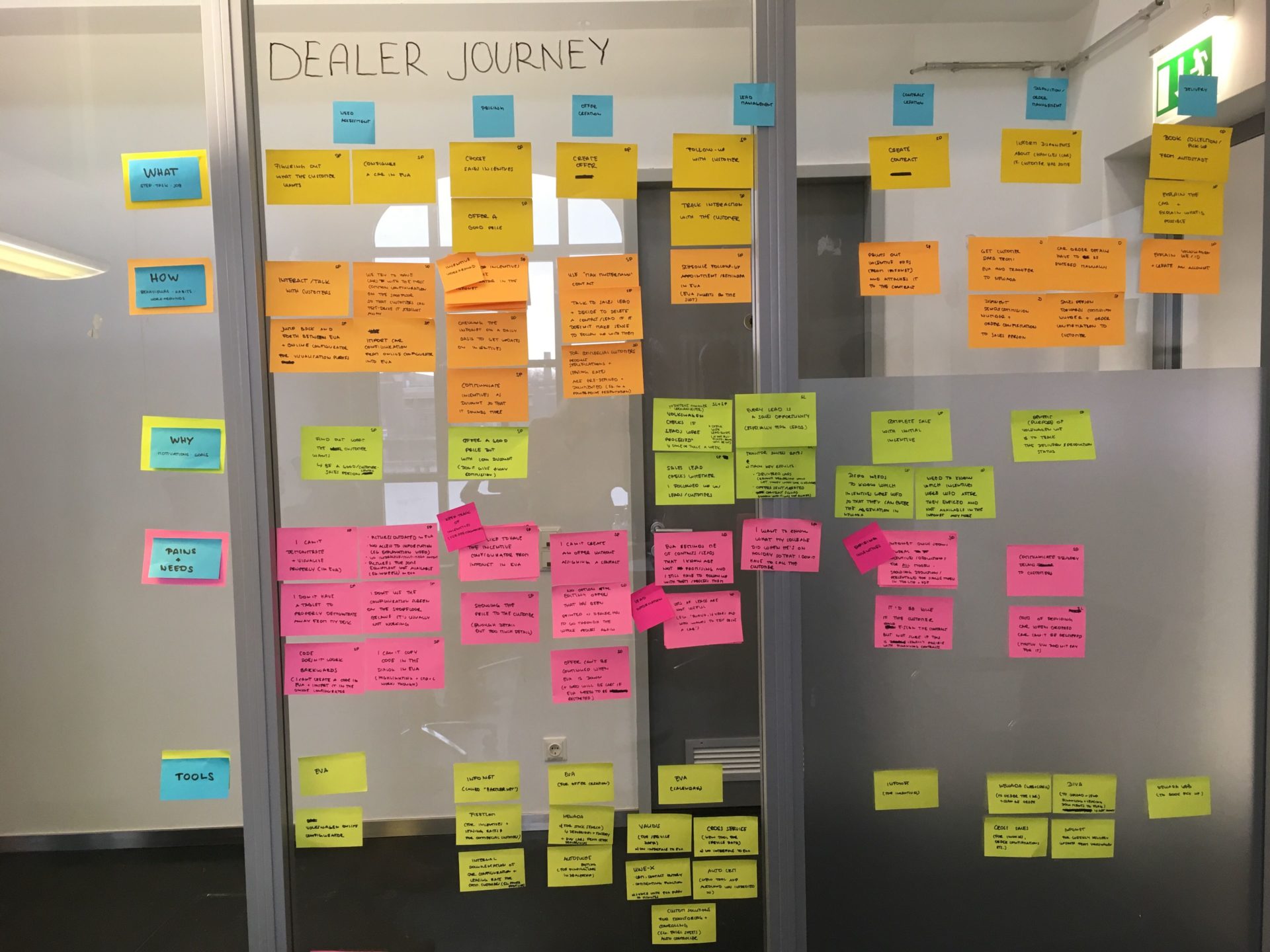
Disccover
User Journey & Flow
We crafted a user journey map, charting the interactions between the salesperson and the car sales application. This helped to identify pain points, moments of friction, and areas for improvement. This process led to formulating key "How Might We" questions to guide the rest of the design process.

Define
Following a deep dive into user research and meticulous analysis of the gathered information, we organized and structured the data into precise problem statements that encapsulated our findings. These distilled insights inspired a set of "How Might We" questions that became the guiding light for our iterative design journey.
How Might We
Unify the sales process and reduce administrative work for salespersons?
How Might We
Assist salespersons in the sales process with demonstrations and visualizations?
How Might We
Help salespersons build relationships with their customers?
Develop
From scribbled sketches to pixel-perfect prototypes, our design process was all about embracing collaboration, iteration, and validation.
Develop
From pencil sketches
to digital designs
Encouraging the team to trade their mouse for a pencil, we engaged in brainstorming and design sketch sessions. The team's expertise accelerated my design process while providing valuable insights into technical constraints and business requirements. Armed with these inputs, I swiftly crafted user flows and organized information to kickstart prototype design for usertestings.
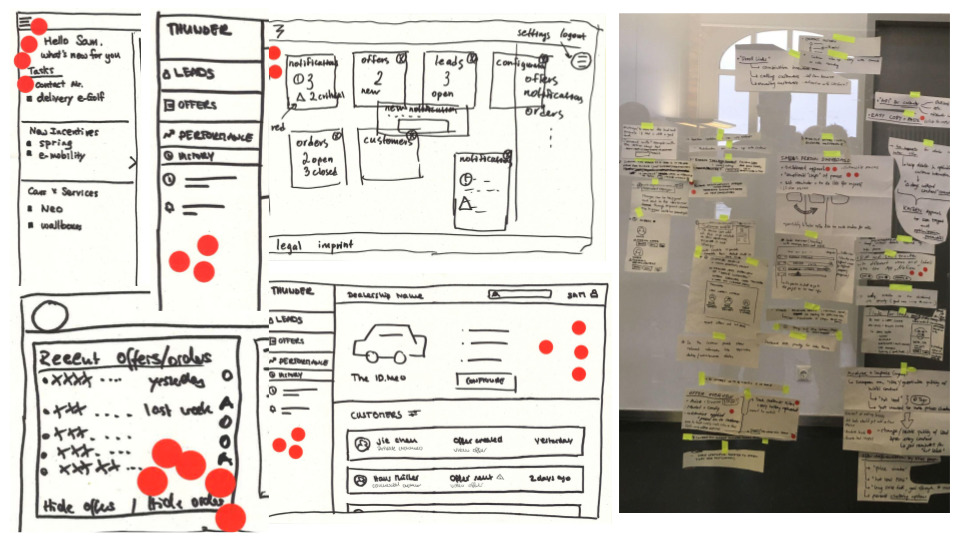
↳ Evaluating request and creating an offer
↳ Customer accepted an offer
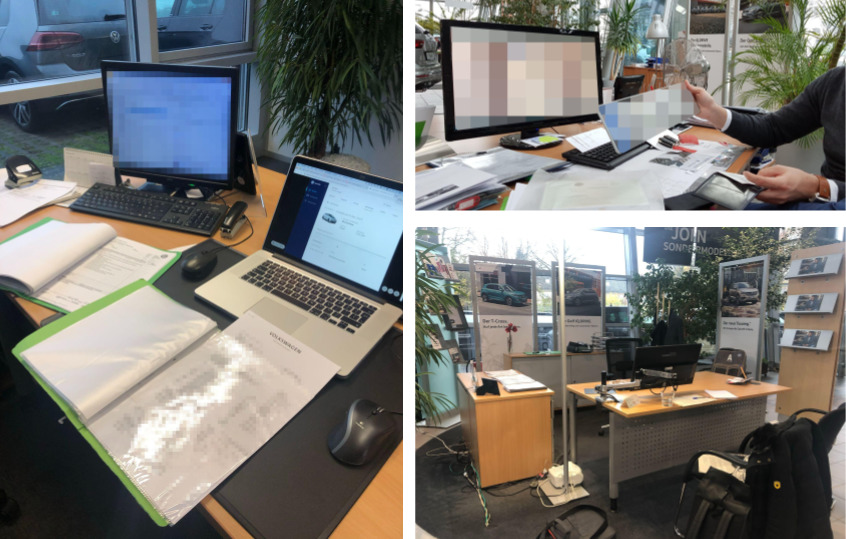
Develop
Usertesting
We conducted extensive design testing across multiple German dealerships, ensuring the validity of our designs. When the pandemic limited on-site visits, we seamlessly transitioned to remote testing through video calls and screen sharing. This agile approach not only increased our confidence in design choices but also accelerated feature delivery.
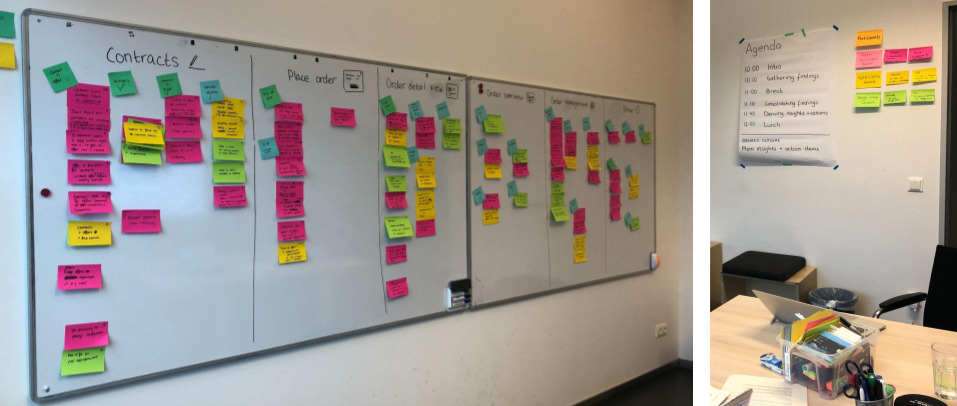
↳ Synthesizing findings after every user test to plan the next steps
(Validating assumptions/ Iteratations & improvements/ quick wins/ new findings & features)
Develop
Design Consistency
& Collaboration
As Thunder's team expanded, we recognized the need for design consistency. We developed a style guide and dedicated time to document our design process.
We also set up regular design reviews within the team, creating a safe space for feedback and collaboration. Additionally, we introduced Designer x Developer Pairing sessions every two weeks to refine the frontend, which built trust and understanding between the two roles.
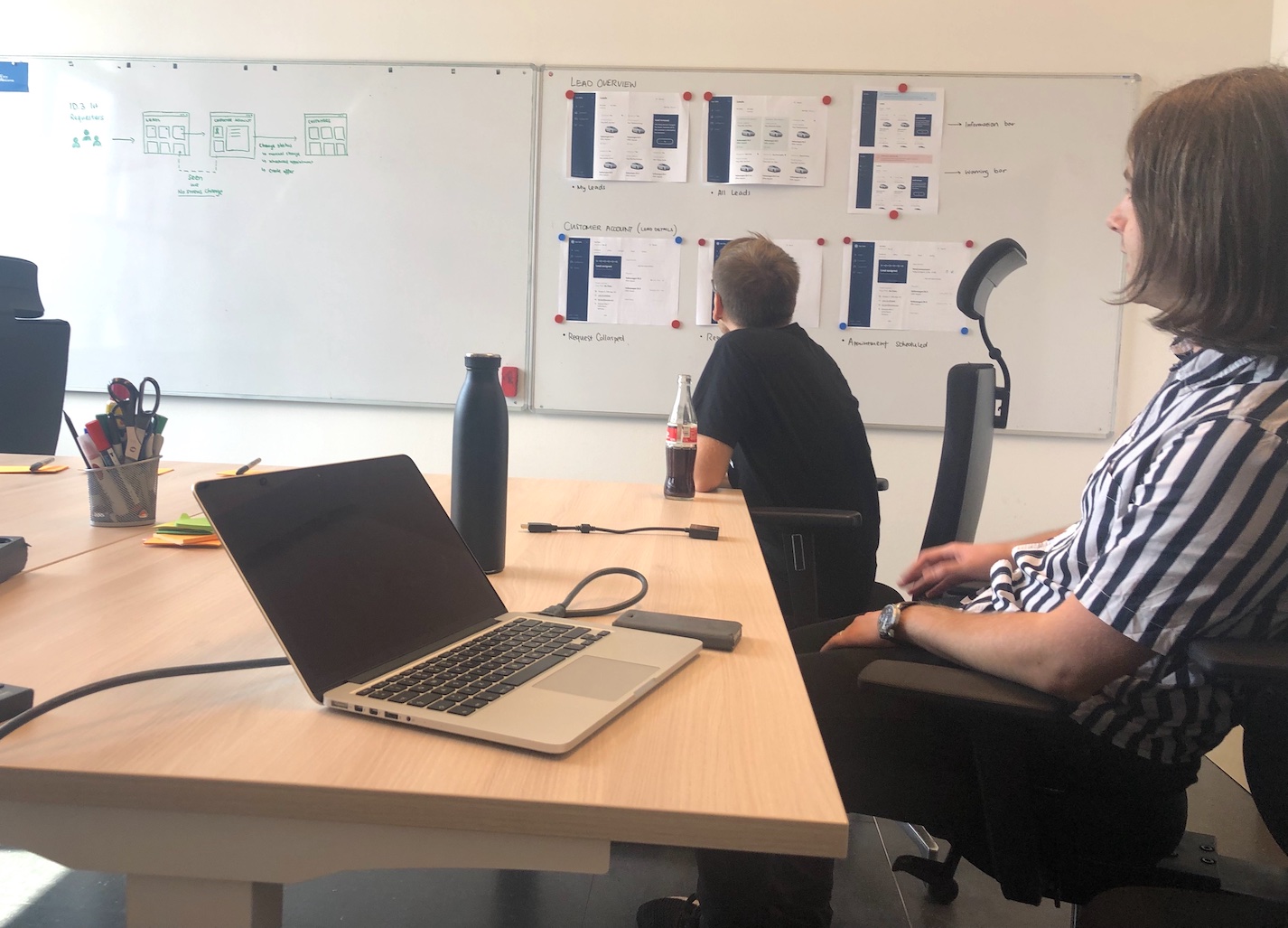

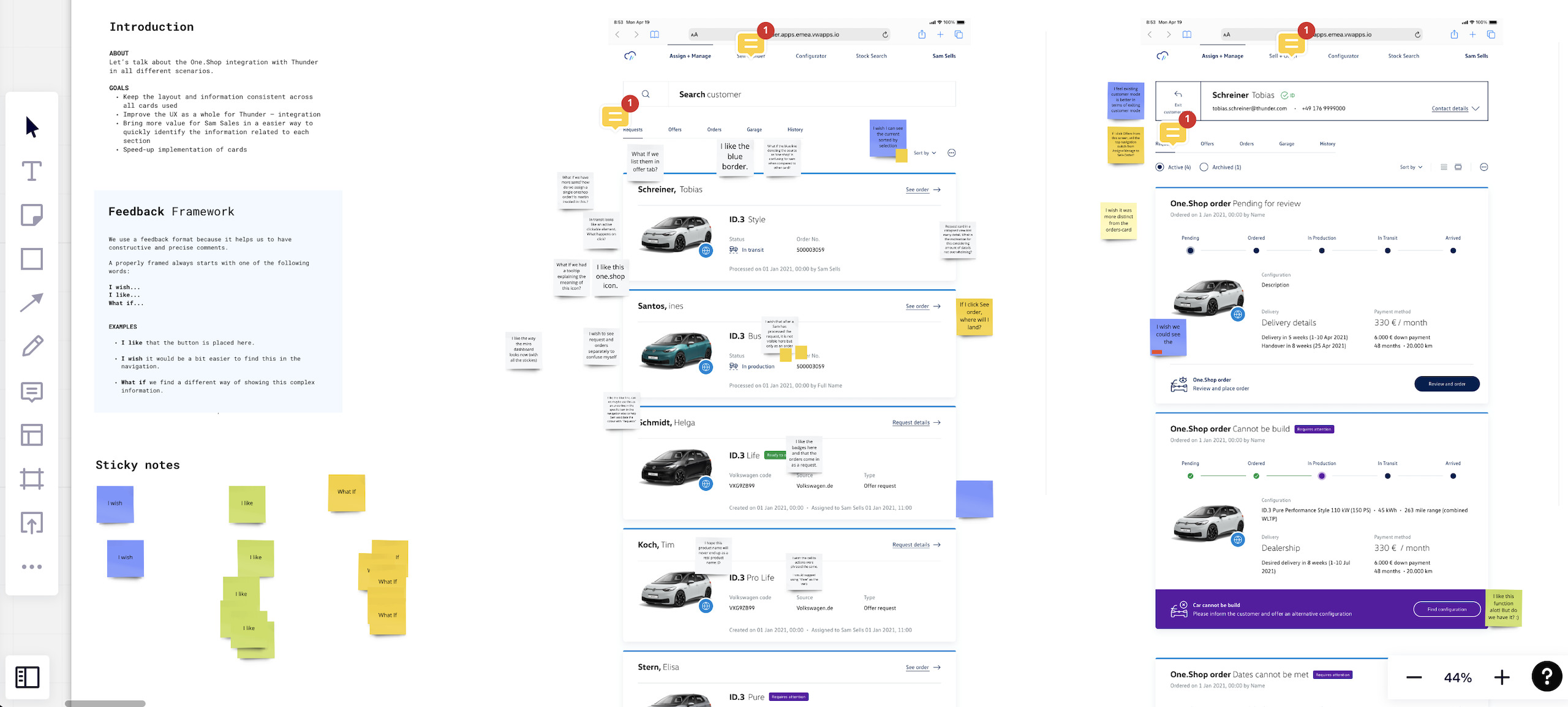
Deliver
We refined our design through a cycle of validation, improvements, and feature discovery. Our finalized design, a visually engaging user interface aligned with Volkswagen's brand design, was guided by a comprehensive style guide, ensuring consistency and providing a quick reference for incoming team members.
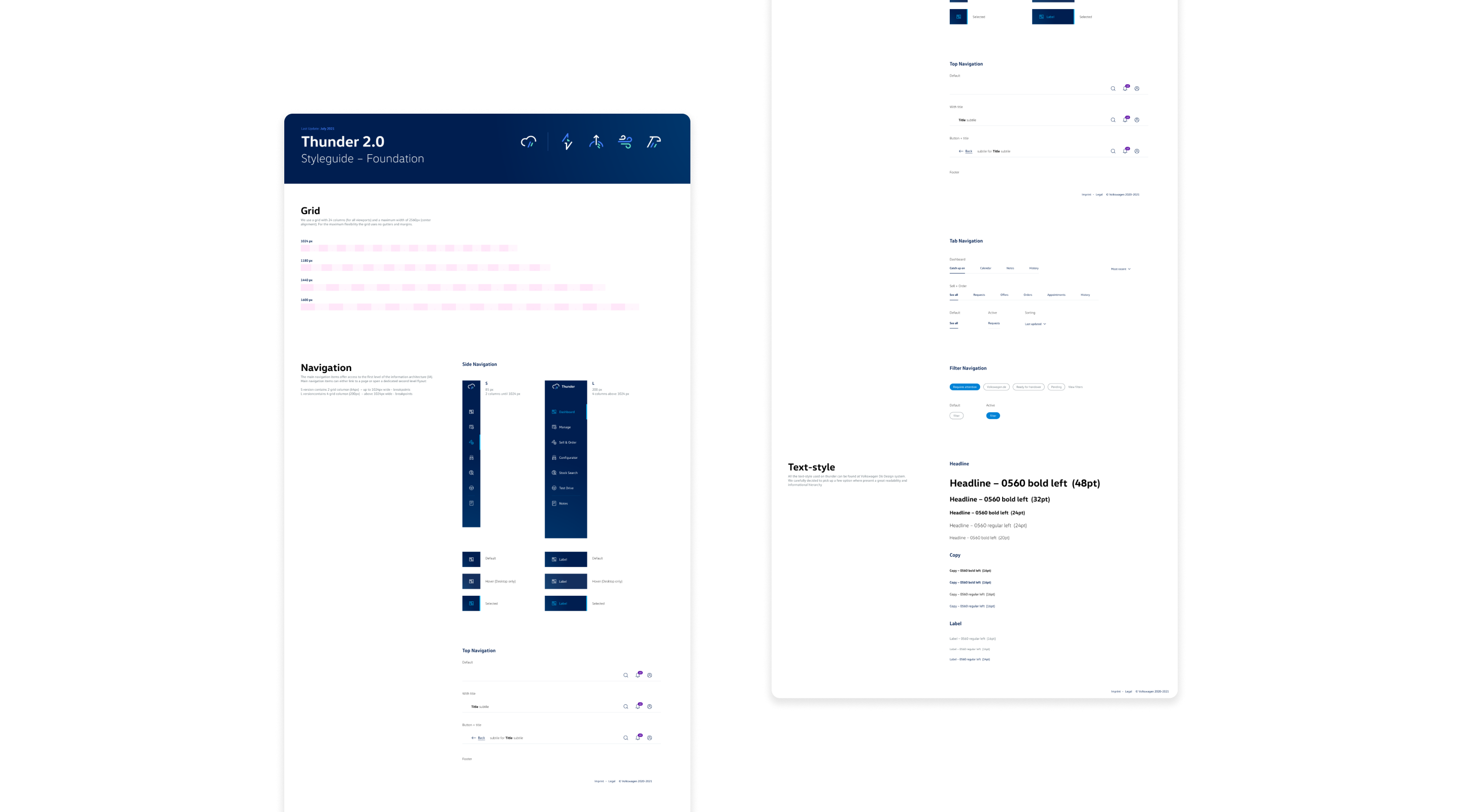
Solution
Unifying Sales Process
& Reducing Paperwork
Streamlining the car sales process, we brought all essential features into one robust application, replacing stacks of paperwork with digitalized solutions. Simultaneously, we incorporated access to customer data via the Volkswagen ID, contributing to a smoother and more efficient sales experience.
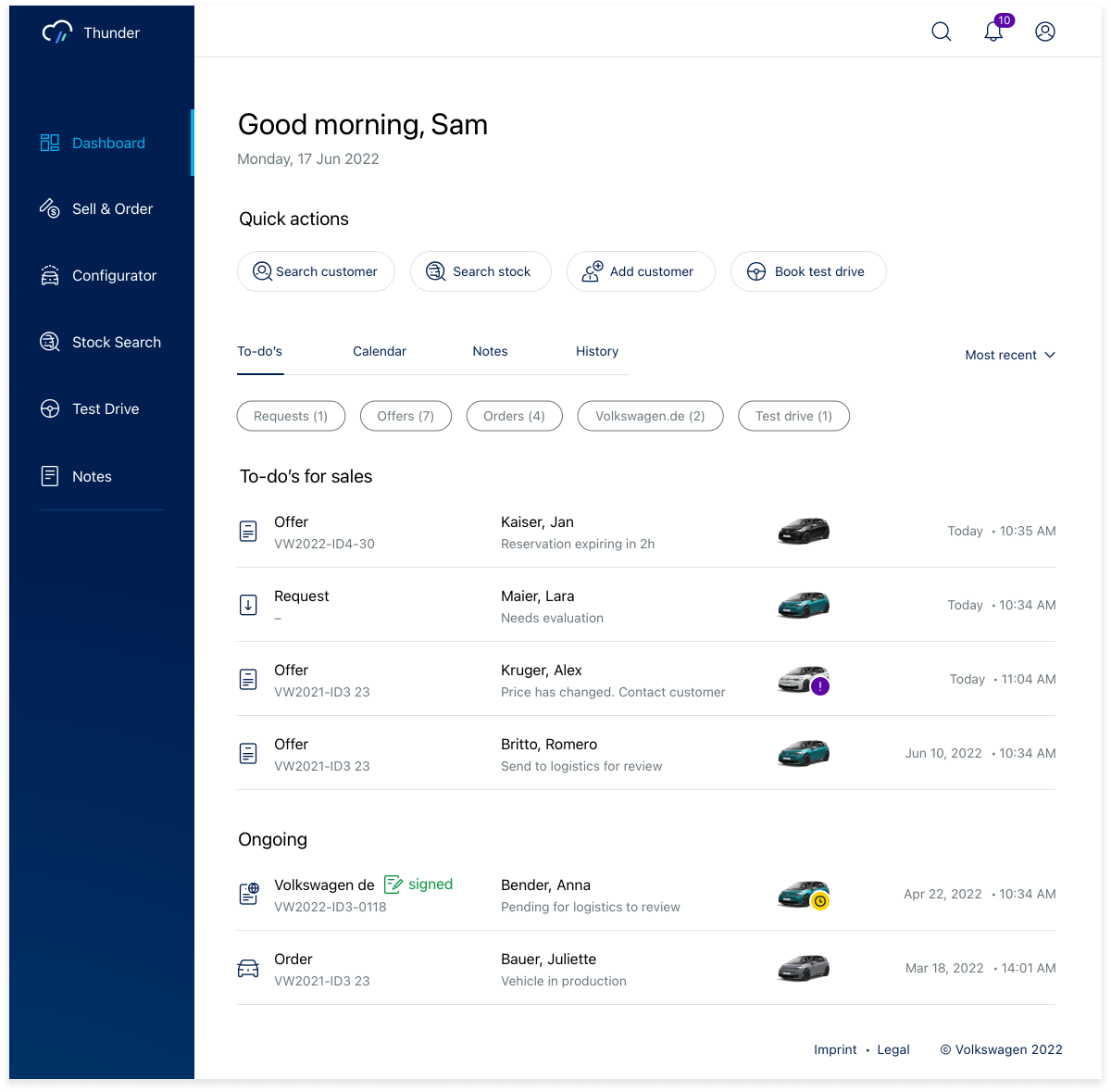
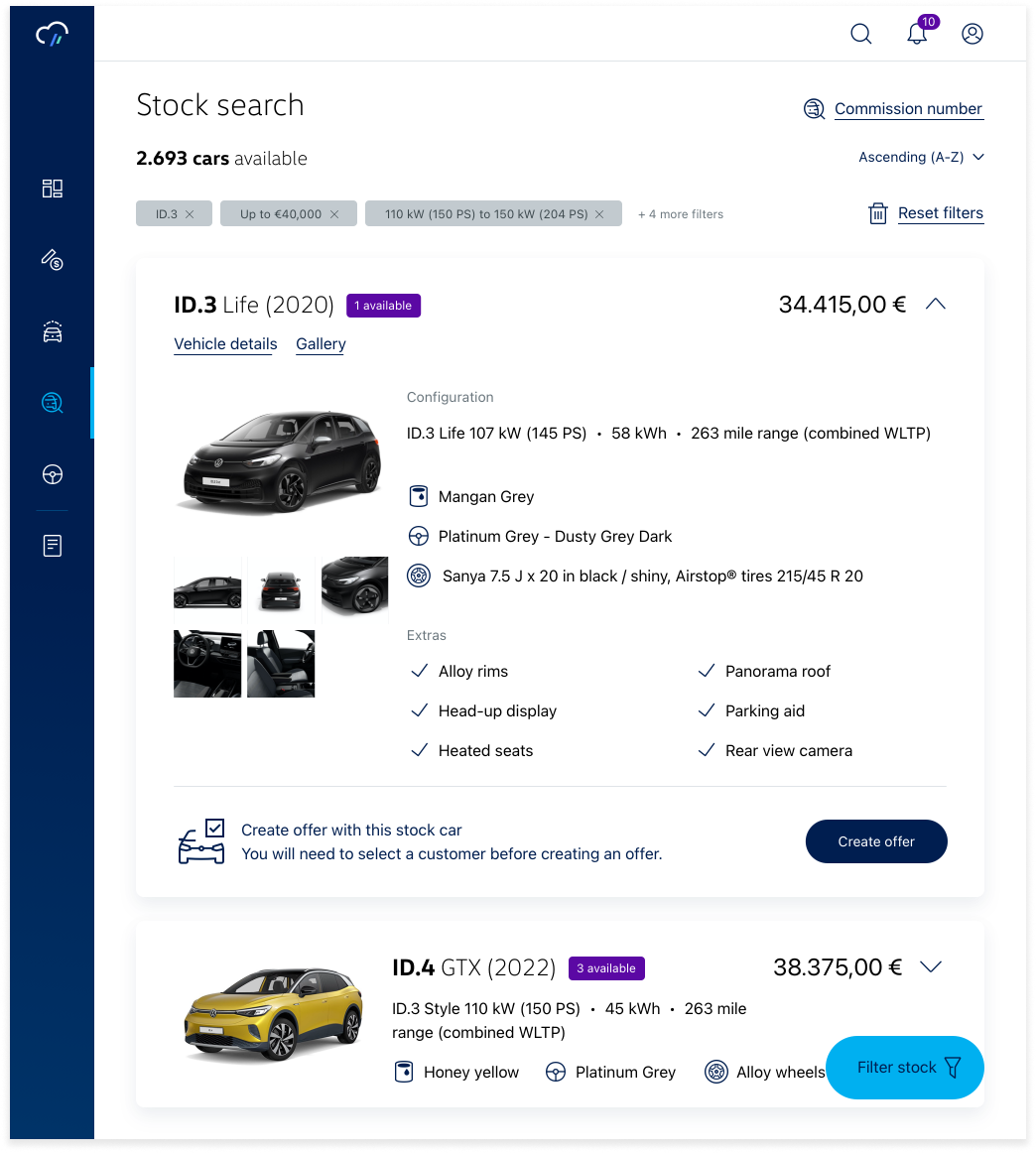
Solution
Assisting Salespeople with
Visualization & Demonstration
Clarifying responsibilities, we provided an overview of all tasks, enhancing the sales process through car configuration and visualization tools. We empowered salespeople like Sam to perform tasks flexibly, from anywhere and at any time.
Solution
Building Relationships
with Customers
Cultivating stronger customer relationships, we facilitated a personalized and attentive customer experience. We introduced tools to track the sales process and implemented reminders and notifications to ensure no crucial interaction or opportunity slipped through the cracks.
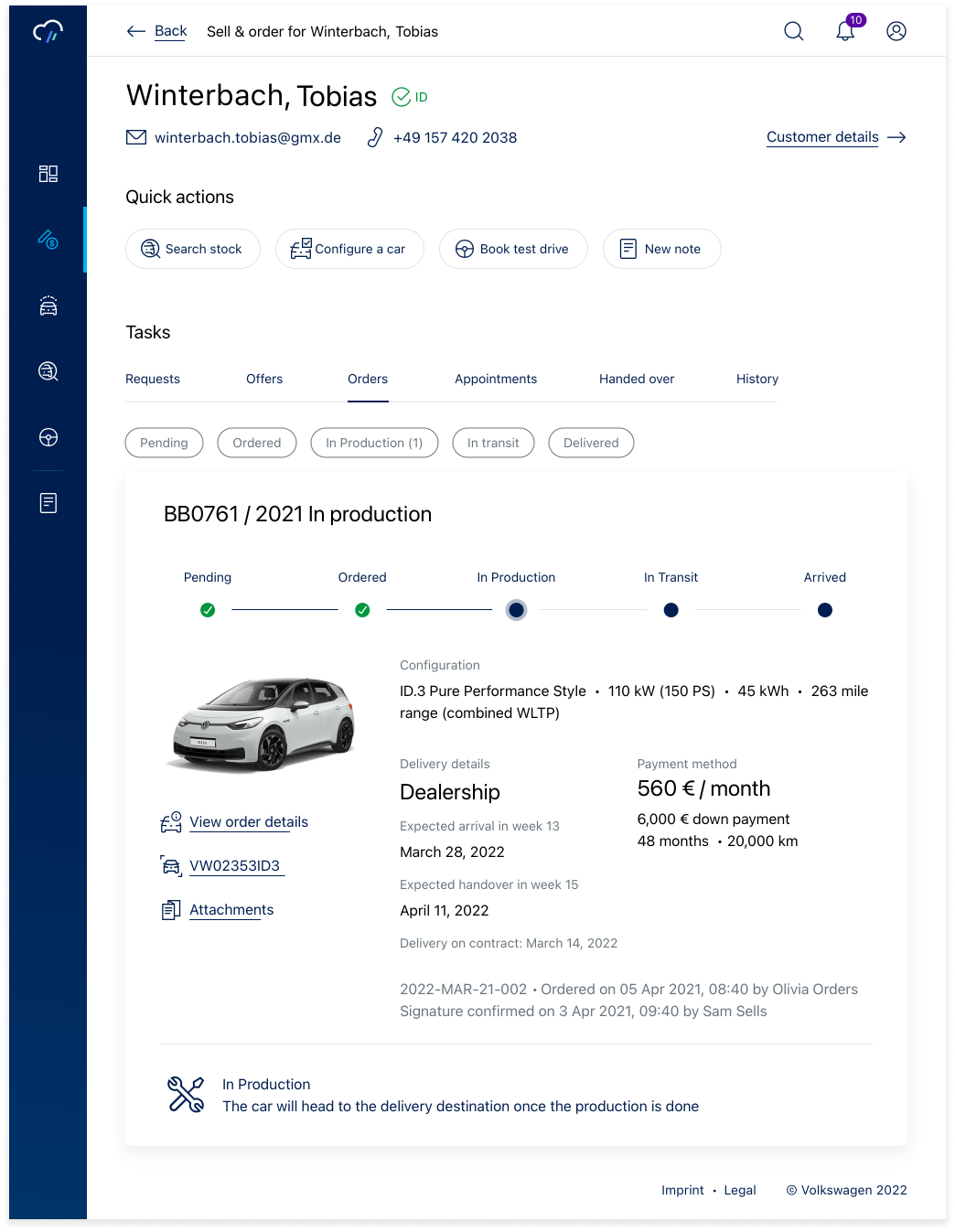
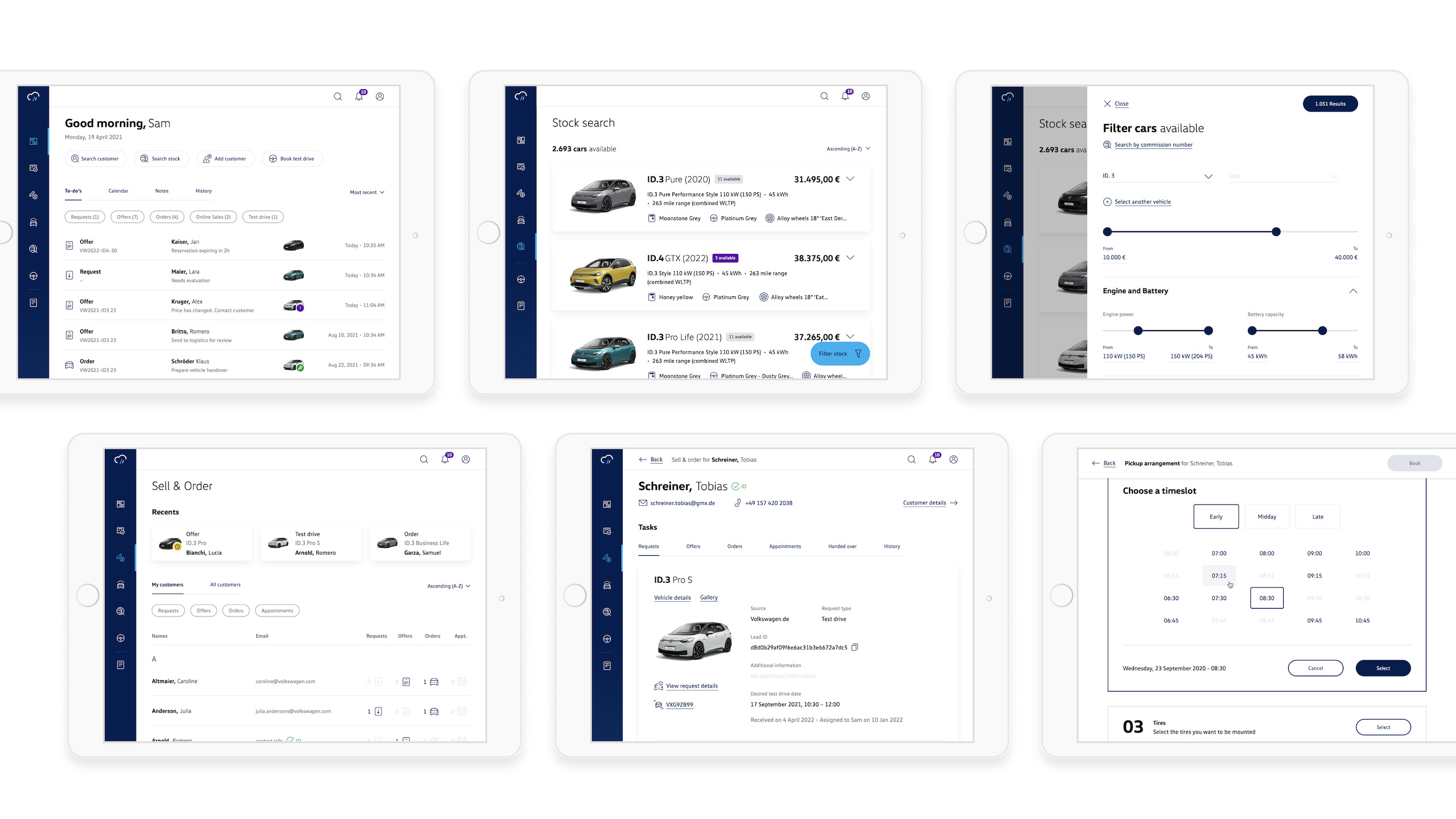
Result
With the successful launch of Thunder, we've rolled out to more than 800 dealerships across Germany, and the feedback has been overwhelmingly positive. Dealers are finding it intuitive and easy to use. The process has been so seamless that one of the users remarked, "Thunder is so intuitive, I don't even need training anymore!"
Reflections
What have I learnt
☞ Collaboration
Partnering with another designer proved to be intense but rewarding. It enriched my skills in both technical and interpersonal aspects.
☞ Question & Be Involved
I learned to question non-user-centered requirements and actively participate in business discussions, advocating for a seamless user experience.
What would I have done differently
☞ Design Documentation
I would have prioritized thorough documentation from the beginning.
☞ Closer Collaboration
I would have aimed for more direct communication with the design system team and other designers across integrated services.